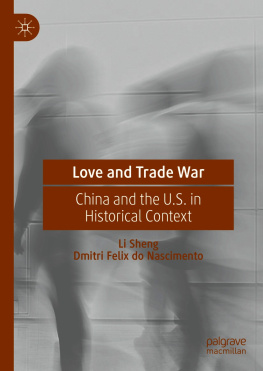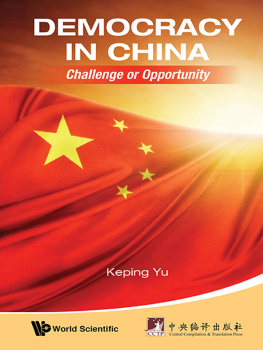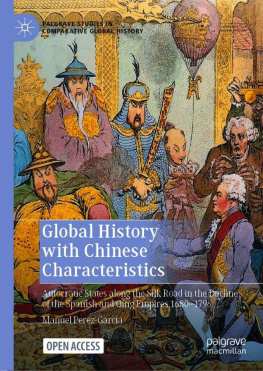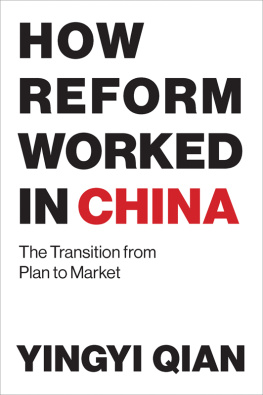Li Sheng
Faculty of Social Sciences, University of Macau, Macau, China
Dmitri Felix do Nascimento
Faculty of Social Sciences, University of Macau, Macau, China
ISBN 978-981-33-4896-7 e-ISBN 978-981-33-4897-4
https://doi.org/10.1007/978-981-33-4897-4
The Editor(s) (if applicable) and The Author(s), under exclusive license to Springer Nature Singapore Pte Ltd. 2021
This work is subject to copyright. All rights are solely and exclusively licensed by the Publisher, whether the whole or part of the material is concerned, specifically the rights of translation, reprinting, reuse of illustrations, recitation, broadcasting, reproduction on microfilms or in any other physical way, and transmission or information storage and retrieval, electronic adaptation, computer software, or by similar or dissimilar methodology now known or hereafter developed.
The use of general descriptive names, registered names, trademarks, service marks, etc. in this publication does not imply, even in the absence of a specific statement, that such names are exempt from the relevant protective laws and regulations and therefore free for general use.
The publisher, the authors and the editors are safe to assume that the advice and information in this book are believed to be true and accurate at the date of publication. Neither the publisher nor the authors or the editors give a warranty, expressed or implied, with respect to the material contained herein or for any errors or omissions that may have been made. The publisher remains neutral with regard to jurisdictional claims in published maps and institutional affiliations.
This Palgrave Macmillan imprint is published by the registered company Springer Nature Singapore Pte Ltd.
The registered company address is: 152 Beach Road, #21-01/04 Gateway East, Singapore 189721, Singapore
Preface
The aim of this book lies in various dimensions surrounding the conflicts that emerged from the trade war between the United States and China after the victory of Donald Trump (Republicans) in the 2016 American elections. Despite having a history of cooperation since the visit of Former Richard Nixon in the 1970s, the United States (U.S.) and the Peoples Republic of China (PRC) experienced different phases of the relationship until the second decade of the twenty-first century. Our focus is on finding elements that can explain the trade war, which started in the historical and dialectical perspective as a reaction process of U.S. trade and foreign policy that has China as the main actor in this confrontation.
The continuous process of the changing status of Chinas political and economic power, which accelerates after the rise of Xi Jinping in 2013, has led the country as a major international player, whether in international trade, finance, multilateral institutions, technological innovation, and military issues. The rise of China caused a change in posture in the bases of relations with the United States. In 2017, U.S. President Donald Trump instructed the U.S. Trade Representative (USTR) to investigate Chinese intellectual property rights violations, invoking Section 301 of the 1974 Trade Law. In 2018, the United States triggered the device of increasing tariffs on almost 50% of Chinas imports. The reasons, perspectives, reactions, and influence of the trade war on American domestic and foreign policy are part of our main concerns in writing this book.
In Chap. , A Brief History of Trade Wars, this is an introduction to the history of trade wars. We will touch on the trade war that may have led to the Great Depression in the 1930s and the many trade wars since 1945. The interest in the subject of this introduction is derived from the ongoing trade wars between the United States and its important trading partners, such as China, the European Union (EU), and Japan, that started in 2018. As U.S. relations with these partners constitute the bedrock of global prosperity and stability, these trade wars will likely have a great impact on both the present and the future. Therefore, it is meaningful and important to begin with an introduction on this topic, which will act as the starting point for the whole line of logic in the book.
Additionally, some countries that are currently against globalization were pro-globalization in the past, so they have experienced a transition. In this process, changes in the society of these countries cannot be ignored. This section of the book will elaborate on how the seemingly insignificant complaints of blue-collar workers in the United States in the 1970s converged into the elective power of anti-globalization, which smoothed the way for the Trump presidency. Under the mantle of misrule, deindustrialization, surging inequality, and other ongoing politics and policies that foster misrule, U.S. citizens cannot evade their responsibility in the surging trade deficit of the United States. As the misrule is caused by the many politics and policies mentioned above, is it possible for one U.S. presidency to solve these problems in a short time through reindustrialization, even though this solution also feeds a self-damaging trade war? If the results are negative, what can a country such as the United States do?
In addition to establishing globalization as the reason for the current dilemma, this book will show how trade wars start and end, how states bargaining with each other over their interests can collaborate for better results, and how wise concessions can be made among smart politicians in the resolution processes. These three hows will be discussed, and then, in a discussion on the past experiences of ending trade wars, the question of whether the U.S. trade wars benefit or hamper the United States in resolving these problems is raised. If these trade wars do not help but instead hamper, why does the United States engage in them? Can the United States only give up on the trade war or take another action at the same time as giving up on the war? This topic will be discussed in the following chapters.
In Chap. , On Sino-U.S. Trade Wars: A Dialectical Consideration, we wonder why Donald Trump starts a trade war with China knowing that this country is one of the United States largest economic partners, as well as a recipient of foreign direct investment (FDI). We argue that there are two directions a country can choose to take when faces with a dilemma. One direction a country can take is blaming others for its own misrule; the country resorts to conflicting diplomacy to force others to accept its demands. This has been the technique of the Trump administration. In taking this direction, the accusing country may have a poor understanding of itself, and its misrule may deepen as it wastes time on blaming others rather than determining how to start domestic reform. The other direction a country can take is establishing its culpability in the dilemma. In this case, a country chooses to exert itself in reforming domestic affairs. This is the path that China has taken since its reform and opening up in 1978. In taking this direction, diplomacy and other countries are used as supplemental supports to help the countrys reform.








